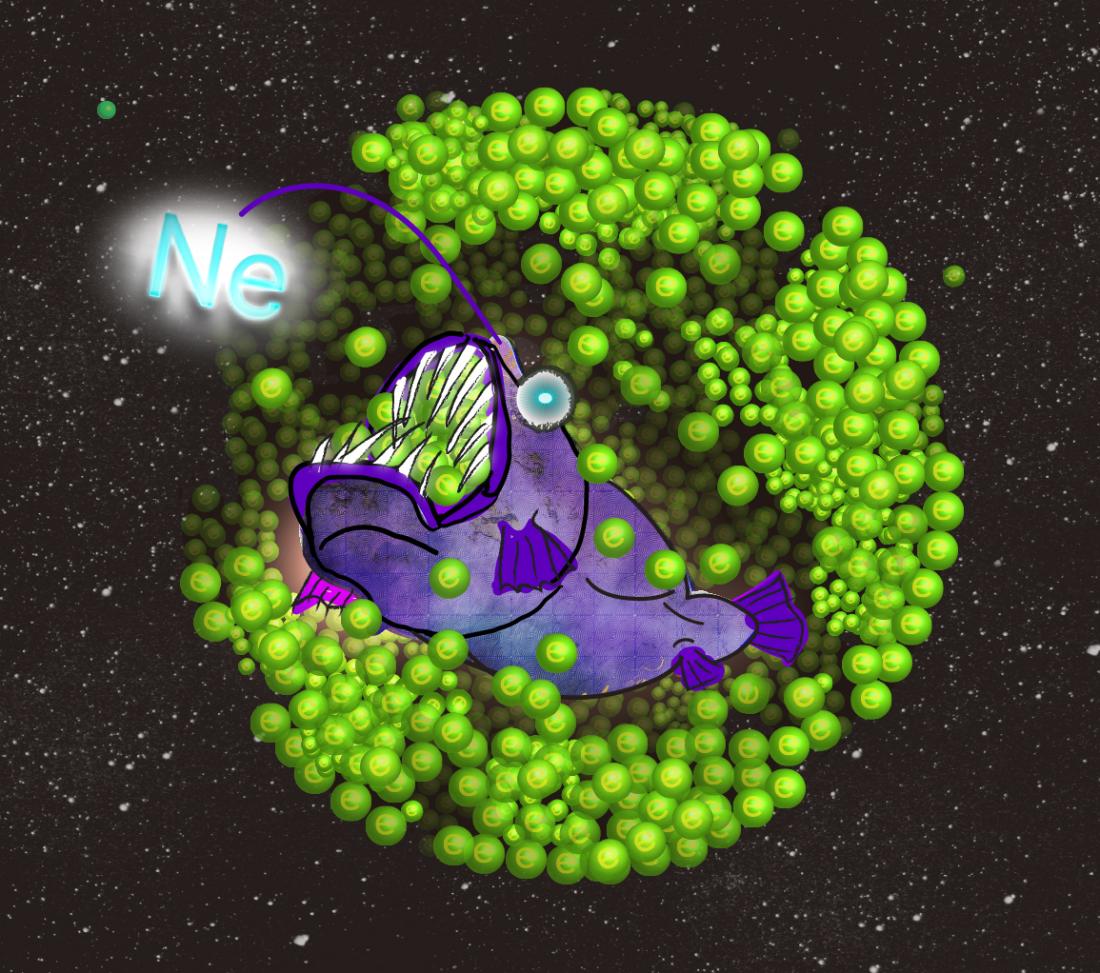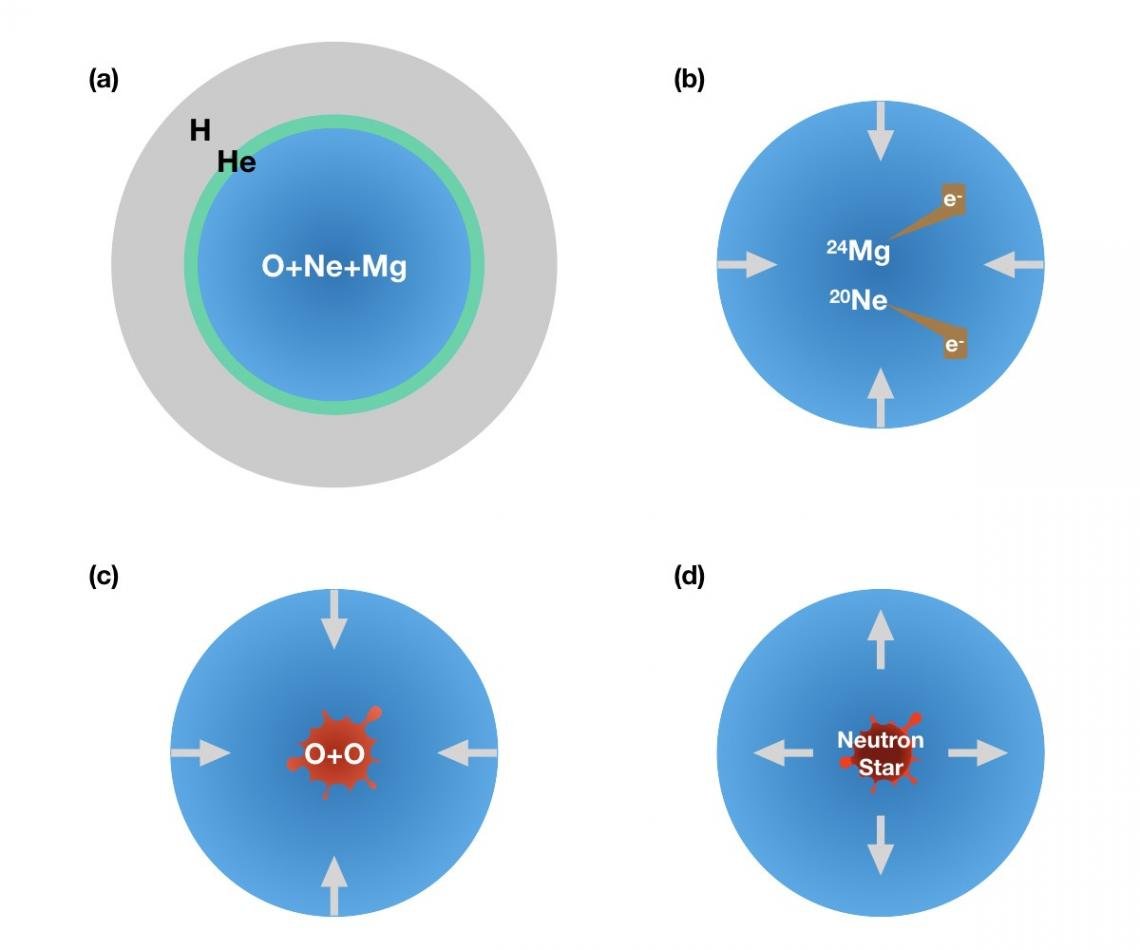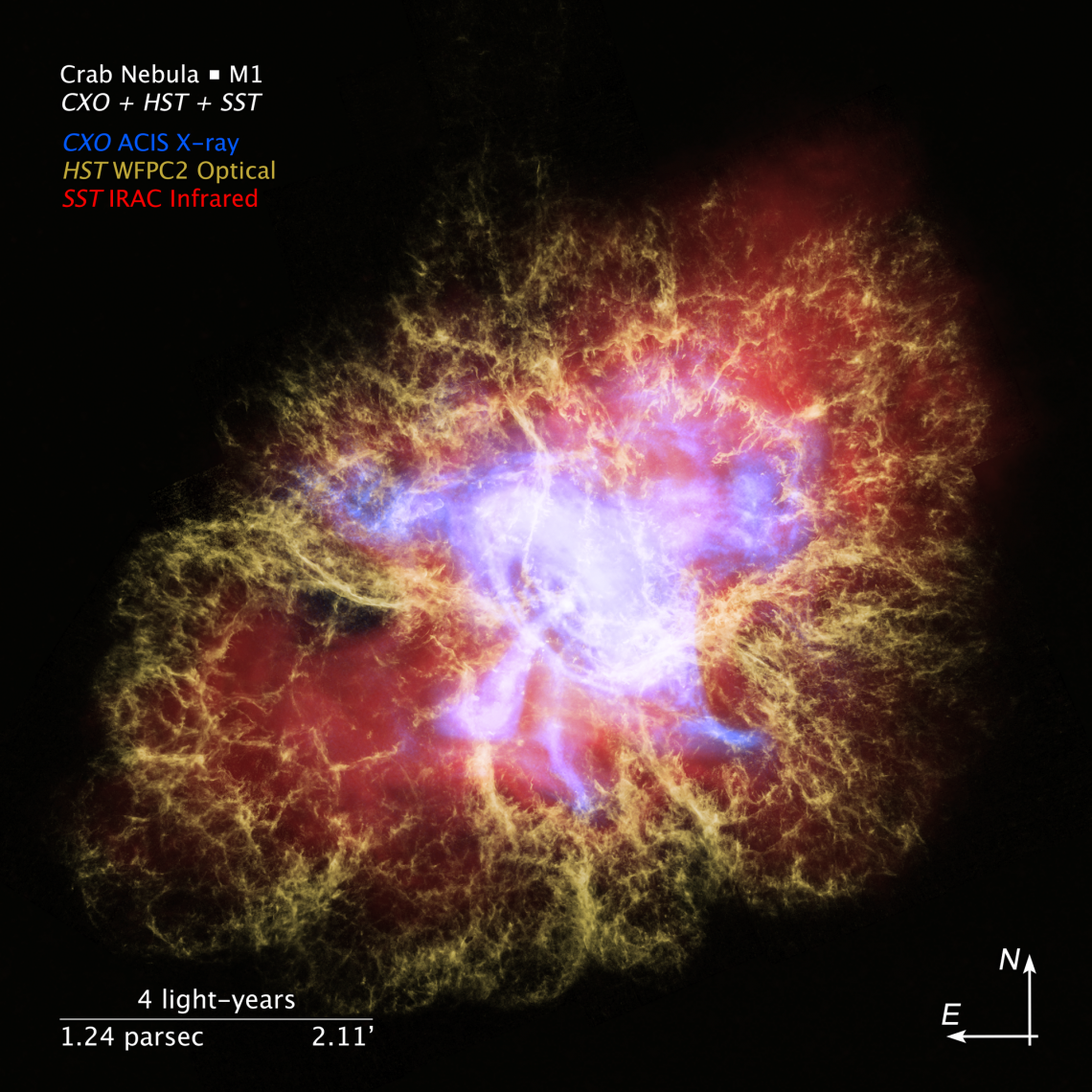Figure 1: An artist’s impression shows how an imaginary deep-sea fish "football-fish" (having Neon-Sign) eats away at the electrons inside a star core.
(a) A star core contains oxygen, neon, and magnesium. Once the core density becomes high enough, (b) magnesium and neon begin eating electrons and inducing a collapse. (c) Then oxygen burning is ignited and produces iron-group-nuclei and free-protons, which eat more and more electrons to promote further collapse of the core. (d) Finally, the collapsing core becomes a neutron star in the center, and the outer layer explodes to produce a supernova.
The Crab Nebula, a remnant of the supernova in 1054 (SN 1054; observed by ancient astronomers in China, Japan and Arab). Nomoto et al. (1982 Nature) suggested that SN 1054 could be caused by Electron Capture Supernova of a star with the initial mass of about 9 times the Sun.
An international team of researchers has found that neon inside a certain massive star can eat so many electrons in the core, a process called electron capture, which causes the star to collapse into a neutron star and produce a supernova.
The researchers were interested in studying the final fate of stars within a mass range of 8 to 10 solar masses, or 8 to 10 times the mass of our Sun. This mass range is important because it includes the boundary between whether a star has a large enough mass to undergo a supernova explosion to form a neutron star, or has a smaller mass to form a white dwarf star without becoming a supernova.
An 8 to 10 solar mass star commonly forms a core composed of oxygen, magnesium, and neon (figure 1). The core is rich in degenerate-electrons, meaning there is an abundance of electrons in a dense space, whose energy is high enough to sustain the core against gravity. Once the core density is high enough, the electrons get eaten by magnesium and then neon, which also found inside the core. Past studies have confirmed that magnesium and neon can start eating away at the electrons once the mass of the core has grown close to a Chandrasekhar’s limiting mass, a process called electron capture, but there has been debate about whether electron capture can cause neutron star formation.
A team of researchers including Chinese University of Hong Kong PhD candidate Shuai Zha (frequent visitor to the Kavli Institute for the Physics and Mathematics of the Universe, Kavli IPMU, and currently a postdoctoral fellow at Stockholm University), Kavli IPMU WPI postdoctoral fellow Shing-Chi Leung (currently a postdoctoral fellow at Caltech), Nihon University Professor Toshio Suzuki, and Kavli IPMU Senior Scientist Ken'ichi Nomoto studied the evolution of an 8.4 solar mass star and ran computer simulations on it to find an answer.
Using newly updated data by Suzuki for density-dependent and temperature-dependent electron capture rates, they simulated the evolution of the star’s core, which is supported by the pressure of degenerate electrons against the star’s own gravity. As magnesium and mainly neon eat the electrons, the number of electrons decreased and the core rapidly shrunk (Figure 2).
The electron capture also released heat. When the central density of the core exceeded 10 billion grams-per-cubic-centimeter, oxygen in the core started to burn materials in the central region of the core, turning them into iron-group-nuclei such as iron and nickel. The temperature became so hot that protons became free and escaped. Now, the electrons became easier to be captured by free protons and iron-group-nuclei, and the density was so high that the core collapsed without producing a thermonuclear explosion.
With the new electron capture rates, oxygen burning was found to take place slightly off-center. Nevertheless, the collapse formed a neutron star and caused a supernova explosion, showing that an electron capture supernova takes place.
Note a certain mass range of stars with 8 to 10 solar masses would form white dwarfs composed of oxygen-magnesium-neon by losing envelope due to stellar wind mass loss. If the wind mass loss is small, on the other hand, the star undergoes the electron capture supernova as found in their simulation.
The team suggests that the electron capture supernova could explain the properties of the supernova recorded in 1054 that formed the Crab Nebula, as proposed Nomoto et al. (1982 Nature) (Figure 3).
These results were published in The Astrophysical Journal on November 15, 2019.





